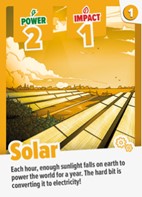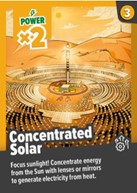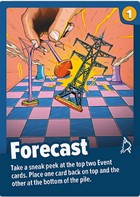ASE Evaluated for Megawatt by Curieus Games

Megawatt is a motivational and educational card game that challenges players to build a robust electricity grid to pit against a variety of events and other players’ attempts to sabotage it. It is based on real world data and playing the game supports students’ understanding of energy resources and methods of generating electricity, the National Grid, energy security and events that may affect electricity generation and supply.
Megawatt is most relevant for Key Stage 3 and 4 (age 11-16) students, but can be used in a simplified form with primary age children (from age 6), and it also adds value to sixth form studies. It can be played with two to five players.
| Tech card | Upgrade card | Action card | Event card |
 |
 |
 |
 |
Each Tech card describes a method of generating electricity and carries key information about the technology – a brief description of how the technology works, a power rating, an environmental impact rating and a cost rating in ‘Coin’. Each rating is expressed as a number of between one and five. The rating values offer qualitative and comparative data about different technologies as students play. There are Tech cards for describing hydro power, wind power, solar power, nuclear power, biomass, coal and gas. Students use Tech card cost ratings to build their power grid to a budget.
Upgrade cards allow players to improve the grid that they have built. Upgrades may appear in different forms. For example, the pumped storage upgrade boosts the value of hydropower in the player’s grid, the offshore wind upgrade doubles the value of wind power in the player’s grid and the carbon capture upgrade mitigates the environmental impact of fossil fuel cards in the player’s grid.
Action cards may benefit the player who draws them directly, or may allow them to interfere with another player’s grid.
Event cards describe a range of natural and anthropogenic events that have an impact on players’ grids.
Playing the game
The website offers instructions for playing the game in written, video and interactive PowerPoint formats. The multiple options ensure that there is an instructional format to suit all. The website also offers guidance for modifying the game to suit younger and lower-attaining players.
The game consists of two distinct phases: the ‘build’ phase and an ‘event’ phase.
During the build phase consisting of two rounds, players draw Tech cards to build their grid. The trick for students at this stage is to build a grid with a good energy mix that will prove to be resilient during the event phase of the game.
The event phase normally consists of seven rounds, although this can be increased or decreased to make the game longer or shorter. During the event phase, players adapt their grids by drawing cards from the Tech, Upgrade and Action card piles. Players have coins to spend on upgrading their grid each round, the number of coins being dependent on the Action and Upgrade cards they hold.
The purpose of the game is to build the most ‘valuable’ grid as determined at the end of the game by the total environmental impact of the grid subtracted from the total generating power. The game works well at focusing students on the relative cost, environmental impact and electrical output of the different generation methods and is an engaging way for students to learn.
Supporting lesson resources
In partnership with ASE, Megawatt has developed lesson activities and materials. There are three activities available, with a fourth planned for the future. Although not essential to playing the Megawatt game, the learning activities are excellent preparation for play and very much support the Key Stage 3 and 4 energy resources sections of the English curriculum. The topics covered by the lesson activities are Energy Resources, Energy Mix and the National Grid. The activities and materials are produced to a high standard, support flexible delivery and provide guidance for adaptation.
Energy Resources
In the Energy Resources lesson, students learn about different methods of electricity generation. The materials comprise fact files about different generation technologies, teacher guidance and support for running a ‘Marketplace’- or ‘Information Stations’-type lesson, student materials and a PowerPoint presentation to support delivery.
Energy Mix
In the Energy Mix lesson, students learn about energy mix and how it affects energy security. They then undertake an application-based task in which they develop a robust energy mix for Jeju Island in the Indian Ocean. The materials comprise case studies for several countries, student support materials, teacher guidance and a PowerPoint presentation to support delivery.
National Grid
In the National Grid lesson, students learn about the purpose and importance of the UK National Grid. They then apply their learning to develop a National Grid on Jeju Island. The materials comprise student support materials, teacher guidance and a PowerPoint presentation to support delivery.
Other support
The Megawatt team provide bespoke workshops for schools, where students learn how to play the game with experts. Sessions typically last between 1-2 hours, are suitable for both secondary and upper primary schools and are ideal for events and collapsed curriculum days.
The team also offers full-day workshops for students, which can include careers education and a teacher session to learn how to use Megawatt in the classroom. Workshop facilitators are energy experts and work as engineers in the energy industry, so are well placed to answer any questions about energy or career pathways.
Conclusions
The Megawatt card game is excellent as a motivational and educational learning resource that makes learning engaging and memorable for students. It is thought-out and based on sound research. At the time of writing, pricing of card decks and support packages is under review, and we recommend you visit the Megawatt website for up-to-date information. The additional lesson resources complement the game well and are supportive of the curriculum.
